Haggate Baptist Church - Haggate - Burnley
`
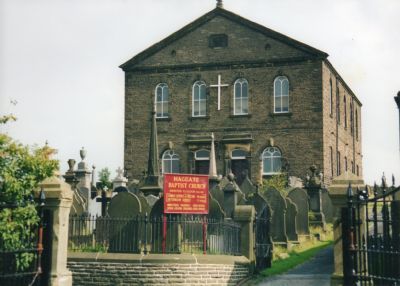
Worshippers first met in 1760. This was in an upper room at Burwains Farm, Briercliffe. In 1760 the area of Briercliffe with Extwistle as it was known then was rural, with arable and mixed grazing, and along with hand loom weaving were the main occupations, long before the industrialisation associated with the cotton industry, which didn’t take off until the mid 19th century. The number of people worshipping continued to grow until the room at Burwains farm could no longer accommodate them.
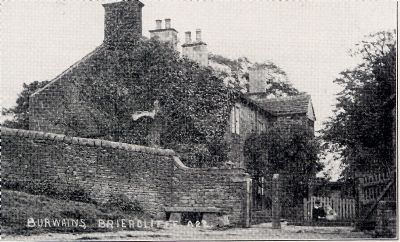
Burwains Farm, Briercliffe.
In 1767, six years after the founding of the church, they secured land at Haggate and built a new chapel. This must have been a very great work for such an infant church to undertake. They must have been men and women of strong faith, and willing to make great sacrifices for their principles; enthusiasts in the cuase of their Lord and Master, ready to spend and be spent in Christ's service. Also in 1767, a license for public worship was granted.
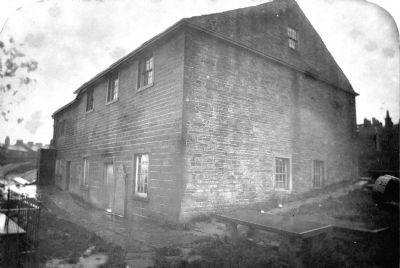
Front of the original chapel built in 1767
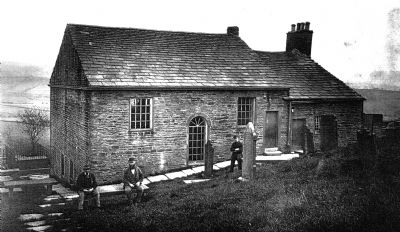
Back of the original chapel
The chapel stood a short distance away from the road leading from Haggate to Lane Bottom. It was a stone building, with dressed wall stones at the front, rubble at the sides and back. The main building, consisted of the ground floor and gallery. The building was built back into the hillside, so that the front was level with the ground floor, and at the back there were two steps up into the gallery. There was seating accommodation for about 400 people.
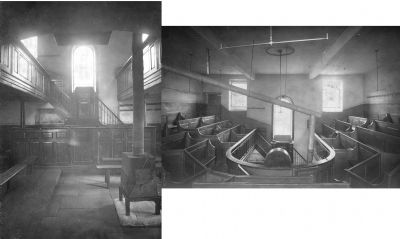
The interior of the old chapel, showing on the left; the downstairs, with the pulpit in the centre, the heating stove and flag floor; on the left, the gallery looking towards the pulpit with the entrance into the gallery through the door, left centre and the flue from the stove.
The ground floor was flagged with stone flags, and there stood in the centre a large stove by which the place was heated. The gallery had the old-fashioned straight-backed pews. The way into the pulpit was down some steps at one end of the gallery. Besides the main building there was the house where the caretaker/sexton lived, which later, after he moved away, was used for classes for the Sunday school. There was no water supply in those days, all the water having to be carried from the wells in the neighbourhood. The lighting was by oil lamps.
About the year 1863 the old chapel, which had done duty for nearly a century, became too small for the number of people attending the services, and the members, after much thought, began to raise money for a new chapel, to cost £2,000. This was considered a very large sum at that time, money not being so plentiful amongst the workers as it is to-day. But the members entered into the enterprise with a spirit and a will, and made great personal sacrifices in order to attain their objective; and the outside public responded most nobly to the appeal for help, so that on Good Friday, 1865, the corner-stone was laid by Mr. William Halstead, of Burnley, and the building progressed so that in the following year the chapel was opened with a debt of £800. This was considered a very large sum to be in debt at that time, and many of our members paid weekly subscriptions to reduce this debt; some sixpence (2½p), some a shilling (5p), some more and some less, as they were able. Many changes were incorporated into the chapel over the years.
At first it was heated by hot air coming through grates in the floor. It was first illuminated using oil lamps, then by gas. On the front elevation the doors and windows were the opposite way to how they are shown in the photograph below. These were just a few of the changes. The chapel was opened on Good Friday, March 30th, 1866, and the preacher was Mr. Blyth. Some hymn sheets have been preserved which are worded: “Hymns to be sung in the New Baptist Chapel, Haggate, on Sunday, April 1st, 1866. Morning Service: Preacher, Mr. Thompson. Afternoon Service: Preacher, Mr. Berry. Evening Service: Preacher, Mr. Oxley"
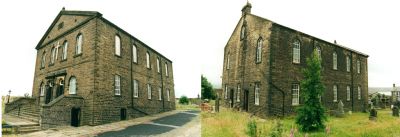
Views of the front and rear of the Church
The church had a seating capacity for over 800 having a large upstairs gallery with a high ceiling. It was indeed a beautiful church in which to worship. One of the outstanding features of the interior was the three manual organ situated above the pulpit. Originally the church had been built without an organ, and it wasn’t until December 1925 that an organ was installed.

The interior of the chapel showing the pulpit, the organ in the gallery with the choir pews on either side of the organ
In and around the 1880’s the necessity for the building of new schools was acute, and it was on the 10th of June, 1882, that the ceremony of laying the corner-stone of the new Sunday school took place. The building was initially used solely as a Sunday school but was later leased to the Education Authority to be used during the week as a day school.
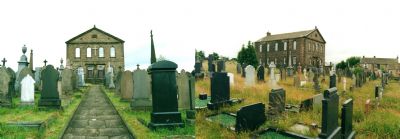
Views of the chapel up the drive and across the graveyard.
Unfortunately, situated on top of a hill, the elements eventually took their toll on the structure and fabric of the chapel, to the effect that the Church Members, with deep regret, voted on the 28th May 2001 that the building should be demolished as it was no longer a safe place in which to worship.
Having formulated a plan as to where the church would subsequently worship, and how the funds would be raised to finance the refurbishment of the Sunday school (which was by then no longer used as a day school) the wheels were set in motion to implement the plan. This was accomplished with a service of ‘Thanksgiving and Rededication of the Refurbished Building’ held on Sunday 24th August 2003. So the photograph below shows the building where we now worship, and where we are, and have been, celebrating the churches 250 years of worship at Haggate in the parish of Briercliffe.
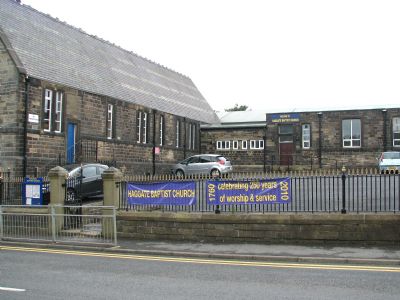
The new Baptist Church location, located just lower down than 'The Sun Inn' public house.
“If anybody would like to expand this series please do, I would just ask that you could let Sadexploration know first at churchmicro@gmail.com so he can keep track of the Church numbers and names to avoid duplication.
There is also a Church Micro Stats & Information page found via the Bookmark list”